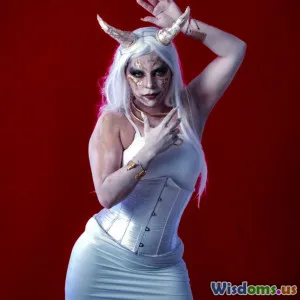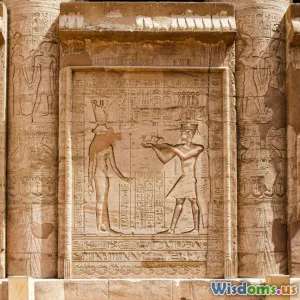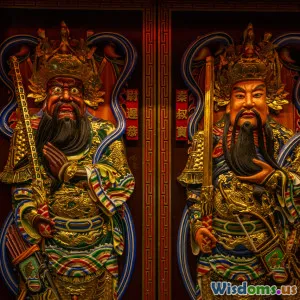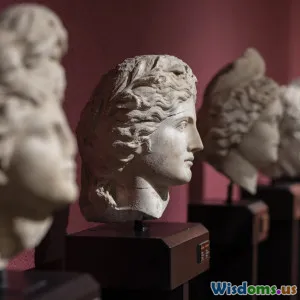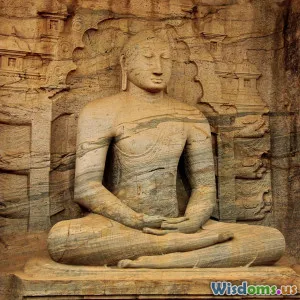
Comparing Trickster Figures Loki Anansi and Coyote Across Cultures
7 min read Explore the cunning and captivating world of trickster gods Loki, Anansi, and Coyote across global mythologies. (0 Reviews)
Comparing Trickster Figures Loki, Anansi, and Coyote Across Cultures
Introduction: The Allure of the Trickster
Throughout human history, mythologies have been rich with characters who defy norms, disrupt order, and spark both chaos and creativity—the tricksters. Among the pantheon of these cunning figures, three stand out for their distinct cultural backdrops yet strikingly similar roles: Loki from Norse mythology, Anansi from West African folklore, and Coyote from Native American traditions.
What draws societies to these tricksters? How do Loki's icy Nordic mischiefs compare to Anansi's webs of stories or Coyote’s cunning escapades on the American plains? This article explores these enigmatic figures, unraveling the layers behind their antics and their deep-rooted cultural significance.
Origins and Cultural Contexts
Loki: The Norse Shape-Shifter
Loki, known as the God of Mischief in Norse mythology, embodies complexity. Unlike purely malevolent tricksters, Loki's role oscillates between antagonist and reluctant helper. He’s a shapeshifter and a master schemer, responsible for binding the monstrous wolf Fenrir but also for provoking Ragnarok—the apocalypse in Norse legend.
Culturally, Loki represents the unpredictable forces of nature and the fine line between chaos and order in Norse cosmology. His stories are primarily found in the Poetic Edda and Prose Edda, medieval Icelandic texts compiling Norse myths.
Example: Loki’s transformation into a mare to distract a stallion in myths showcases both his adaptability and boundary-crossing nature.
Anansi: The West African Spider Trickster
Anansi, a spider god in Akan folklore from Ghana, often appears as a cunning and witty figure. He is credited with bringing stories, wisdom, and knowledge to humanity. Anansi’s persona varies from humorous to sly, sometimes selfish, yet he frequently outsmarts more powerful beings with sheer intellect.
Through the transatlantic slave trade, Anansi stories spread to the Caribbean and the Americas, preserving African heritage.
Example: In many tales, Anansi tricks other animals to obtain their talents or food, such as the famous story where he captures all the world's wisdom in a pot.
Coyote: The Native American Cultural Transformer
Coyote features predominantly in the mythology of indigenous tribes across North America, such as the Navajo, Lakota, and Shoshone. He functions as a creator, a deceiver, and a teacher. Sometimes foolish, sometimes clever, Coyote’s stories impart life lessons about creation and human flaws.
His significance is both sacred and familiar, illustrating human nature through his escapades.
Example: The Navajo story where Coyote attempts to steal the sun and fails shows his audacious yet flawed ambition.
Traits and Themes Uniting the Tricksters
Intelligence and Cunning
All three tricksters wield intelligence as their primary weapon. Loki’s wit fuels both his sabotage and rescue missions; Anansi’s stories celebrate ingenuity over brute strength; Coyote employs craftiness but is not immune to folly, reflecting human imperfections.
Shape-Shifting and Adaptability
Loki frequently shapeshifts—taking forms ranging from a salmon to a fly—to achieve his ends. Anansi, though primarily a spider, can change form and often disguises himself. Coyote, often depicted as an actual coyote or man-coyote hybrid, embodies transformation symbolically.
Ambiguity: Neither Fully Good Nor Evil
Unlike clear-cut heroes or villains, these tricksters occupy ambiguous moral grounds. Loki's deeds cause suffering but also solutions; Anansi’s selfishness sometimes brings benefits to humanity; Coyote’s actions can be reckless yet instructive.
Agents of Change and Cosmic Disorder
Tricksters disrupt norms, carrying out creative destruction. Loki’s role in Ragnarok marks renewal through apocalypse; Anansi’s stories often explain natural phenomena, providing meaning; Coyote’s chaotically wise acts shape the world for humankind.
Cultural Impacts and Modern Representations
Influence on Literature, Art, and Media
- Loki has surged in modern popular culture—prominent in Marvel comics and films, bringing Norse myths to a global audience, albeit with creative liberties.
- Anansi’s tales inspire children’s literature and oral storytelling traditions, emphasizing African and Afro-Caribbean identity.
- Coyote appears in Native American art, music, and contemporary literature, serving as a cultural emblem.
Lessons and Moral Ambiguity
While entertaining, these myths offer lessons on human nature, the balance of order vs. chaos, and the necessity of cleverness in survival. For instance, Anansi’s stories oftentimes emphasize consequences of greed or arrogance masked by humor.
Preservation of Heritage through Oral Traditions
These tricksters are quintessential in preserving their cultures. Storytelling sessions involving these figures foster communal bonds and instill values beyond generations.
Conclusion: The Universal Appeal of Tricksters
Despite differing cultural fabrics—Norse cold fjords, African tropical forests, and North American deserts—Loki, Anansi, and Coyote share striking similarities as tricksters embodying intelligence, complexity, and transformation. Their stories resonate because they reflect the multifaceted nature of humanity: our flaws, our creativity, and our perennial dance between order and chaos.
Today, revisiting these mythic figures encourages cross-cultural appreciation and highlights how storytelling remains a powerful tool for wisdom and cultural identity. By understanding and celebrating the trickster archetype, readers unlock timeless reflections on life’s unpredictable, sometimes mischievous, yet enlightening journey.
References:
- Lindow, John. Norse Mythology: A Guide to Gods, Heroes, Rituals, and Beliefs (2001).
- Abrahams, R. D. Anansi Stories (1990).
- Velie, Alan R., and Nora Dauenhauer. Hoke’eyéátse: Coyote Stories (1977).
- Marvel Studios, Loki TV series (2021).
Explore these tricksters to dig deeper into cultural narratives that shaped humanity’s collective imagination.
Rate the Post
User Reviews
Popular Posts










